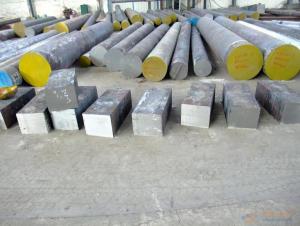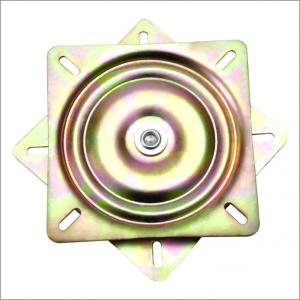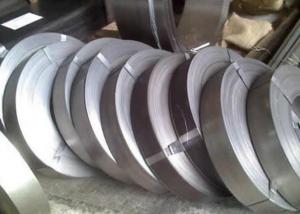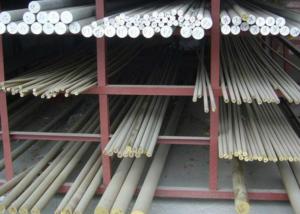50Mn Alloy Steel Round Bar of CNBM 16-300MM
- Loading Port:
- Shanghai
- Payment Terms:
- TT OR LC
- Min Order Qty:
- 25 m.t.
- Supply Capability:
- 50000 m.t./month
OKorder Service Pledge
OKorder Financial Service
You Might Also Like
Item specifice
Alloy round steel bar 50Mn
Product Description
1. Steel Grade: AISI 1045, 45#, C45, S45C
2. Diameter: 16mm-300mm
3. Length: 6m-12m
4. Shape: Round bar, flat bar, square bar
5. Technique: Hot rolled, cold drawn
Specification:
Material | 50Mn | Round bar | Dia(mm) | 16-600 |
Process | EAF + LF + VD + Forged + Heat Treatment (optional) | Length (mm) | Max 12000 | |
Heat treatment | Normalized / Annealed / Quenched / tempered | Flat bar | Thickness(mm) | 8-500 |
Delivery condition | Hot forged +Rough machined (black surface after Q/T)+ Turned (optional) | Width(mm) | 70-200 | |
Test | Ultrasonic test according to SEP 1921-84 D/d | Length (mm) | Max 12000 |
Chemical Composition
C | Si | Mn | Cr | Ni | Cu |
0.5~0.8 | 0.17~0.37 | 0.25~1.2 | ≤0.25 | ≤0.30 | ≤0.25 |
Packing and Delivery:
Packing in bundle package or as your requriements.
Delivery Detail: About 45 days after confirming order.
Usage and Applications
1. Steel round bar is used in a large number of architectural and engineering structures. Or it can be used in construction of plants for the production of steel house frames, high-voltage transmission towers, bridges, vehicles, boilers, containers, ships, etc.
2. And we can use this kind of product on the performance of the mechanical parts if the demand is not very high.
3. Some especial material steel round bar can be used for main shaft of steamer, hummer shank, with big section and supper force.
Product Show
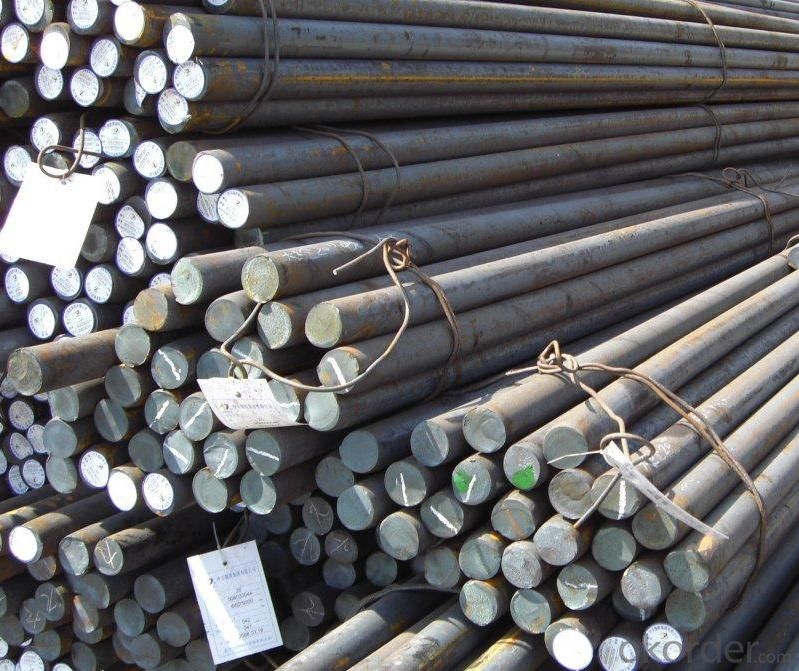
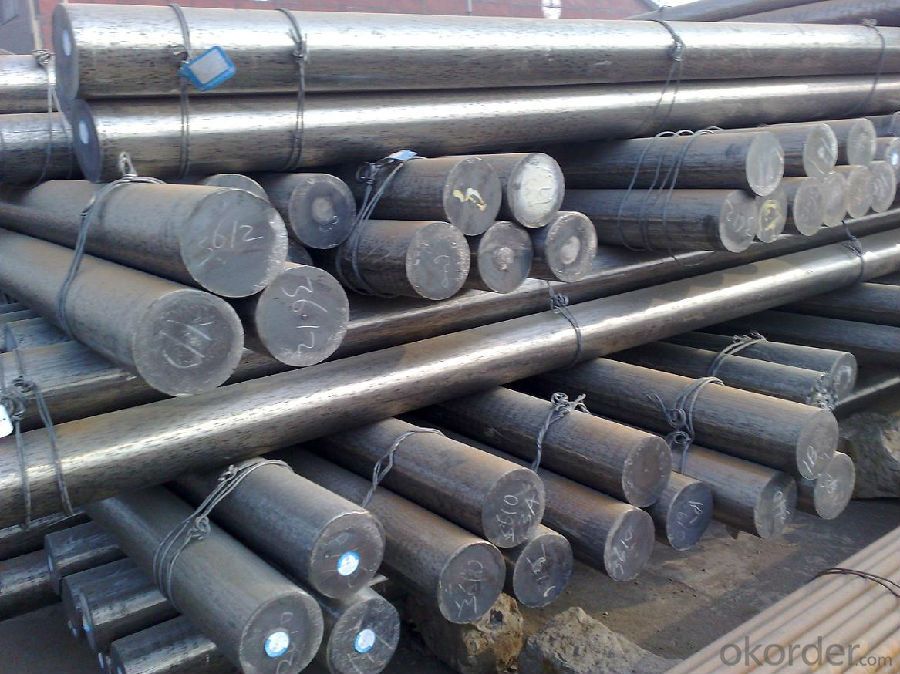
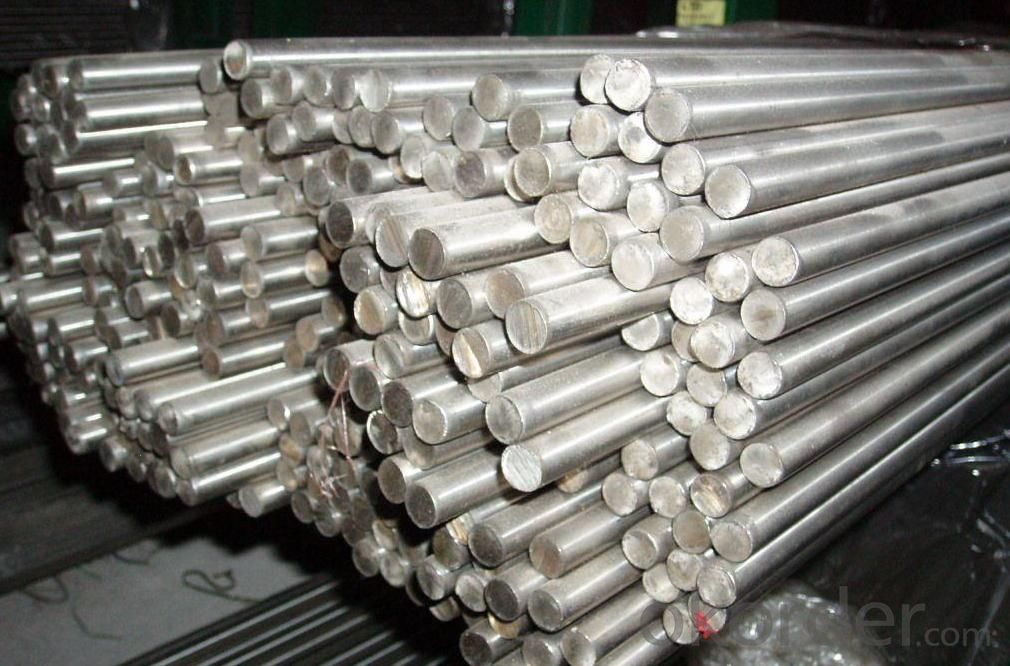
- Q:What are the main factors that determine the cost of special steel?
- The cost of special steel is primarily determined by several key factors. Firstly, the composition of the steel plays a significant role in determining its cost. Special steels often have specific alloying elements added to enhance their properties, such as corrosion resistance, strength, or heat resistance. The cost of these alloying elements can vary widely, and the greater the quantity and complexity of the alloy, the higher the cost of the steel. Secondly, the manufacturing process used to produce the special steel can greatly impact its cost. Special steels often require more intricate and controlled manufacturing processes compared to regular steel. These processes may involve additional steps such as precise heat treatment, forging, or casting, which can increase the overall cost of the steel. Another crucial factor influencing the cost of special steel is market demand and availability. If a particular type of special steel is in high demand but limited supply, the cost tends to rise. Conversely, if there is a surplus of a specific type of special steel, the cost may decrease. Market forces, including global supply and demand dynamics, can significantly impact the cost of special steel. Moreover, the quality and certification of the special steel can also affect its cost. Higher-quality steel that meets stringent industry standards and certifications may often command a higher price due to the additional testing, quality control, and documentation required. Transportation and logistics costs are also important factors to consider. If the steel needs to be transported over long distances or requires specialized handling, it can add to the overall cost. Lastly, economic factors such as currency exchange rates, inflation, and government policies can impact the cost of special steel. Fluctuations in exchange rates can affect the cost of raw materials and manufacturing equipment, which in turn influence the final price of the steel. Government policies, such as import and export tariffs or subsidies, can also impact the cost of special steel. In summary, the main factors that determine the cost of special steel are the composition, manufacturing process, market demand and availability, quality and certification, transportation and logistics, and economic factors. Understanding these factors is crucial for both buyers and sellers of special steel to make informed decisions and ensure competitive pricing.
- Q:How does special steel contribute to the medical aftermarket industry?
- Special steel plays a crucial role in the medical aftermarket industry by providing high-quality materials for the manufacturing of various medical devices and instruments. Its unique characteristics, such as corrosion resistance, high strength, and biocompatibility, enable the production of durable and long-lasting equipment like surgical instruments, implants, and prosthetics. The use of special steel ensures the safety and effectiveness of these medical products, ultimately contributing to improved patient outcomes and advancements in healthcare.
- Q:Can special steel be used for making electrical components?
- Indeed, electrical components can indeed be crafted using special steel. Special steel denotes a collection of steels boasting distinct properties and features that render them fitting for diverse uses, including electrical components. These steels are frequently tailored to possess exceptional electrical conductivity, minimal electrical resistance, commendable magnetic traits, and outstanding heat endurance. They are commonly employed in electrical engineering scenarios where utmost performance and dependability are indispensable, such as the production of transformers, motors, generators, and electrical transmission systems. Furthermore, special steel can also furnish protection against corrosion and elevated temperatures, thereby augmenting its aptness for the manufacturing of electrical components.
- Q:What are the common quality control measures for special steel?
- Some common quality control measures for special steel include performing chemical composition analysis, conducting mechanical property testing, inspecting surface defects, ensuring dimensional accuracy, and conducting non-destructive testing such as ultrasonic or magnetic particle inspection. Additionally, the use of standardized quality control systems, such as ISO 9001, can aid in ensuring consistent and reliable production of special steel.
- Q:How does special steel contribute to improved product performance?
- Special steel contributes to improved product performance in several ways. Firstly, special steel is known for its exceptional strength and durability. This allows products made from special steel to withstand heavy loads, high temperatures, and harsh environments without deforming or breaking. This enhanced strength and durability result in a longer product lifespan and reduced maintenance requirements. Additionally, special steel possesses excellent corrosion resistance properties. It is less susceptible to rust and other forms of corrosion, making it ideal for products that are exposed to moisture or chemicals. This corrosion resistance ensures that the product remains in optimal condition, even in corrosive environments, and reduces the need for frequent replacements. Special steel also offers superior heat resistance. It can withstand extreme temperatures without losing its mechanical properties, such as strength and hardness. This makes it suitable for products that operate in high-temperature conditions, such as engines, turbines, and exhaust systems. The ability of special steel to retain its properties at elevated temperatures significantly improves product performance and reliability. Furthermore, special steel can be tailored to meet specific requirements through different alloying elements and heat treatment processes. This customization allows manufacturers to fine-tune the material properties to suit the intended application, leading to improved product performance. For example, by adjusting the alloying elements, special steel can exhibit improved wear resistance, impact resistance, or hardness, depending on the desired application. In summary, special steel contributes to improved product performance by providing exceptional strength, durability, corrosion resistance, heat resistance, and customization options. These properties enhance the product's lifespan, reliability, and performance under challenging conditions, ultimately benefiting the end-users.
- Q:How does special steel perform in cryogenic creep resistance?
- Special steel is known for its exceptional performance in cryogenic creep resistance. Cryogenic creep refers to the deformation that occurs in materials under constant stress at extremely low temperatures. Special steel, due to its unique composition and manufacturing processes, exhibits superior resistance to this type of deformation compared to other materials. The low temperature environment encountered in cryogenic applications can cause conventional materials to lose their strength and become more susceptible to creep deformation. However, special steel is specifically designed to withstand these challenging conditions. Its composition typically includes a higher proportion of alloying elements such as nickel, chromium, and molybdenum, which enhance its mechanical properties and improve its resistance to creep at cryogenic temperatures. Furthermore, special steel undergoes rigorous heat treatment and processing techniques to optimize its microstructure and strengthen its grain boundaries. This results in a material with improved strength, toughness, and resistance to creep deformation, even at extremely low temperatures. The exceptional performance of special steel in cryogenic creep resistance makes it highly suitable for applications that involve storage, transportation, or processing of materials at cryogenic temperatures. Industries such as aerospace, energy, and scientific research heavily rely on special steel for the construction of cryogenic storage tanks, superconducting magnets, and cryogenic valves, among others. In conclusion, special steel exhibits remarkable performance in cryogenic creep resistance due to its unique composition, heat treatment, and processing techniques. Its ability to maintain its mechanical properties and resist deformation at extremely low temperatures makes it an ideal choice for various cryogenic applications.
- Q:What are the different methods for surface hardening special steel?
- There are several methods available for surface hardening special steel, each with its specific advantages and applications. Some of the commonly used methods are: 1. Carburizing: This process involves heating the steel in a carbon-rich environment, typically using a gas or liquid medium. The carbon atoms diffuse into the steel's surface, forming a high-carbon layer, which results in increased hardness. Carburizing is suitable for complex-shaped parts and provides good wear resistance. 2. Nitriding: Nitriding is a process where the steel is exposed to nitrogen-rich atmospheres at elevated temperatures. The nitrogen atoms diffuse into the steel's surface, forming nitrides, which significantly enhance the surface hardness and wear resistance. Nitriding is often used for parts requiring high fatigue strength and resistance to galling and fretting. 3. Induction hardening: Induction hardening utilizes high-frequency alternating currents to heat the steel's surface rapidly. This localized heating is followed by quenching, creating a hardened layer. Induction hardening is ideal for parts with localized wear areas or where only specific regions need to be hardened. 4. Flame hardening: Flame hardening involves heating the steel's surface to a high temperature using an oxy-fuel flame and then rapidly quenching it. This method is suitable for large and heavy parts that require deep hardening. Flame hardening provides good wear resistance and toughness. 5. Laser hardening: Laser hardening is a precise and localized surface hardening technique. A laser beam is used to heat the steel's surface, and quenching is performed afterward. This method offers high flexibility and control, making it suitable for complex geometries and small areas that require hardness improvement. 6. Carbonitriding: Carbonitriding is a combination of carburizing and nitriding processes. The steel is exposed to an atmosphere containing both carbon and nitrogen, resulting in the formation of a compound layer with improved hardness and wear resistance. Carbonitriding is commonly used for parts requiring a balance of hardness, toughness, and wear resistance. It is important to note that the selection of the appropriate surface hardening method depends on factors such as the specific steel composition, desired hardness depth, part geometry, intended application, and cost considerations.
- Q:What is the significance of tensile strength in special steel?
- Tensile strength is of great significance in special steel because it determines the steel's ability to withstand stretching or pulling forces without breaking or deforming. This property is crucial in various industries, especially in manufacturing and construction, where high tensile strength is required for structural integrity and safety. Special steel with superior tensile strength can withstand heavy loads, resist impacts, and provide durability, making it highly sought after in applications such as building infrastructure, automotive manufacturing, and aerospace engineering.
- Q:What are the common challenges in heat treating titanium alloys?
- Heat treating titanium alloys can present several common challenges. One of the main challenges is the high reactivity of titanium with oxygen, nitrogen, and hydrogen at elevated temperatures. This reactivity can lead to surface contamination and the formation of undesirable oxides, nitrides, or hydrides, which can affect the mechanical properties of the alloy. Another challenge is the formation of alpha-case, a thick layer of alpha-phase titanium on the surface of the alloy during heat treatment. Alpha-case is brittle and can significantly reduce the fatigue strength and ductility of the material. Therefore, minimizing or eliminating the formation of alpha-case is crucial in heat treating titanium alloys. Furthermore, titanium alloys have a narrow temperature range for effective heat treatment. If the temperature is too low, it may not achieve the desired microstructure and mechanical properties. On the other hand, if the temperature is too high, it can lead to grain growth, which can reduce the strength and toughness of the alloy. Additionally, the heat treatment of titanium alloys often requires precise control of the heating and cooling rates to achieve the desired microstructure and properties. Rapid or uneven cooling can result in non-uniform microstructures, residual stresses, or distortion of the part. Finally, the cost of heat treating titanium alloys can be a challenge. Titanium alloys have a high affinity for oxygen, which necessitates the use of specialized equipment, such as vacuum furnaces or controlled atmosphere furnaces, to maintain a low oxygen environment. These specialized heat treatment processes can be expensive and require careful handling and maintenance to ensure the desired results. In conclusion, the common challenges in heat treating titanium alloys include managing reactivity with oxygen, nitrogen, and hydrogen, minimizing alpha-case formation, achieving the correct temperature range, controlling heating and cooling rates, and dealing with the cost of specialized equipment and processes. Overcoming these challenges is essential to obtain high-quality titanium alloy components with desired properties.
- Q:How does special steel contribute to national security?
- National security is significantly enhanced by special steel, which serves various purposes. Firstly, it is extensively utilized in the production of military equipment and weapons. Tanks, armored vehicles, submarines, and aircraft carriers require special steel due to its exceptional strength, resilience, and resistance to corrosion. Incorporating special steel into military applications ensures the durability and reliability of these vital defense systems, ultimately strengthening national security. Secondly, special steel plays a pivotal role in the construction of critical infrastructure. Bridges, tunnels, and buildings, which are essential for a nation's functioning and security, rely on special steel. Its unparalleled strength and ability to withstand extreme conditions make it a crucial material for structures that must endure natural disasters, terrorist attacks, or other security threats. By incorporating special steel into infrastructure projects, a nation can fortify its security and safeguard its citizens. Additionally, special steel is of utmost importance in the energy sector, particularly within nuclear power plants. Special steel alloys are employed in the construction of reactor vessels and other components that encounter high temperatures and pressures. The utilization of special steel ensures the integrity and safety of these critical facilities, mitigating the risk of potential nuclear accidents that could pose significant threats to national security. Lastly, special steel contributes to national security by supporting the defense industry and fostering technological advancements. Research and development in special steel alloys often lead to breakthroughs in material engineering, which can have broader applications beyond defense. These advancements stimulate innovation in sectors such as aerospace, automotive, and energy, thereby augmenting a nation's overall technological capabilities and economic competitiveness. In conclusion, special steel's contribution to national security is multifaceted. Its incorporation in military equipment, critical infrastructure, nuclear power plants, and technological advancements all play a pivotal role in safeguarding a nation's interests, protecting its citizens, and maintaining its strategic advantage in an increasingly turbulent world.
1. Manufacturer Overview |
|
|---|---|
| Location | |
| Year Established | |
| Annual Output Value | |
| Main Markets | |
| Company Certifications | |
2. Manufacturer Certificates |
|
|---|---|
| a) Certification Name | |
| Range | |
| Reference | |
| Validity Period | |
3. Manufacturer Capability |
|
|---|---|
| a)Trade Capacity | |
| Nearest Port | |
| Export Percentage | |
| No.of Employees in Trade Department | |
| Language Spoken: | |
| b)Factory Information | |
| Factory Size: | |
| No. of Production Lines | |
| Contract Manufacturing | |
| Product Price Range | |
Send your message to us
50Mn Alloy Steel Round Bar of CNBM 16-300MM
- Loading Port:
- Shanghai
- Payment Terms:
- TT OR LC
- Min Order Qty:
- 25 m.t.
- Supply Capability:
- 50000 m.t./month
OKorder Service Pledge
OKorder Financial Service
Similar products
New products
Hot products
Related keywords






















